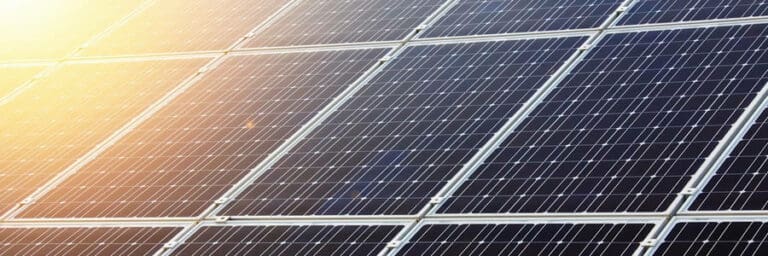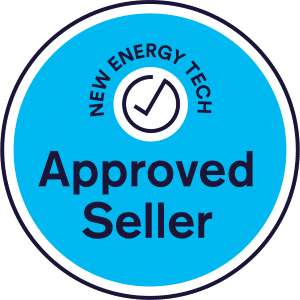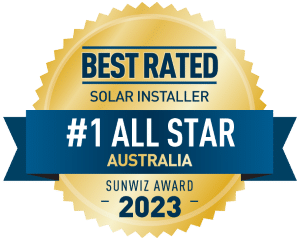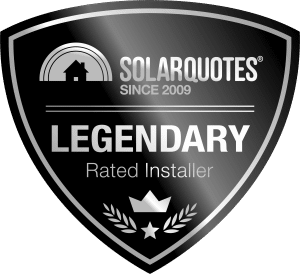
Thinking about solar for your business but feeling lost when it comes to rebates?
You are not alone. Many business owners get stuck at this point. They hear about solar rebates for commercial systems, but they are unsure what those rebates are, how they work, or how to obtain them. They also worry that if they get it wrong, they could miss out on tens of thousands of dollars.
That is a fair concern. Rebates for commercial solar are not simple. PSC Energy has helped many businesses claim the right ones and get the best value from their solar investment. With the right setup, you can reduce the cost of your system, improve your return on investment, and even claim an ongoing income from your solar energy.
In this article, you will learn about the following:
- What Are STCs?
- What Are LGCs?
- STCs vs LGCs: What’s the Difference?
- Smart Strategy: Claiming Both STC and LGC Schemes
- Who Does the Paperwork for STCs and LGCs?
By the end of this article, you’ll know what the two main rebate types for commercial solar in Australia are. You will also learn who can claim them, how they work, and how to combine them for the biggest benefit.
What Are STCs?
STC stands for Small-scale Technology Certificate. This is a government rebate that helps lower the cost of solar systems with a capacity of less than 100 kilowatts (kW).
If your business installs a system of this size, you are eligible for this rebate. It works the same way for homeowners. Size is what matters here.
Who Can Claim STCs?
STCs apply to:
- Small to medium businesses.
- Sites with energy needs that fit systems up to 100 kW.
For example:
- A small warehouse might install a 30kW system.
- A busy office could install a 50kW system.
- A larger site might opt for the full 100 kW.
Each of these businesses would qualify for the STC rebate.
How Do STCs Work?
STCs are based on the amount of solar energy your system is expected to generate between now and 2030, when the scheme ends.
You don’t have to wait for the rebate. You get all the certificates upfront when the system is installed. The solar retailer applies the discount to your system price.
An Example
Let’s say you want a 100 kW system for your business.
- The full price is around $110,000.
- The STC rebate is worth about $40,000.
- You only pay $70,000 out-of-pocket.
This means STCs cover about 30% of the total cost.
Why STCs Matter
With the rebate, your solar system can pay for itself in 3 to 4 years.
After that, the electricity savings go straight to your bottom line. And because solar systems last 25 to 30 years, that adds up to a strong return.
Who Handles the STCs?
You don’t need to do anything to claim STCs yourself.
PSC Energy takes care of it. The discount is automatically applied when you purchase the system.
If you’re interested in learning a bit more about commercial solar, you might want to check out the following article titled, Commercial Solar Energy in Sydney: Why Should I Consider It?
What Are LGCs?
LGC stands for Large-scale Generation Certificate. This rebate applies to solar systems that are larger than 100 kilowatts (kW).
These systems are typically designed for larger businesses with high electricity consumption.
If your system is over 100 kW, you are not eligible for STCs. You get LGCs instead.
How Do LGCs Work?
LGCs are based on how much electricity your solar system actually produces. You get 1 LGC for every 1,000 kilowatt-hours (or one megawatt-hour) of electricity your system generates.
Unlike STCs, you do not get the rebate upfront.
Instead, you earn LGCs every six months. You receive them from the time your system starts working until the year 2030.
How Do You Get Value from LGCs?
There are two main ways your business can use these certificates:
1. Sell the LGCs for Money
PSC Energy works with what’s called a Green Benefit Retailer. This retailer helps you manage the certificates and turns them into income. After we install the system, we hand you over to the Green Benefit Retailer.
Here’s how it works:
- Every six months, the Green Benefit Retailer informs you of the number of LGCs your system has generated.
- They ask you to raise an invoice for those LGCs.
- You get paid based on the current price per certificate.
Currently, the market price is approximately $25 per LGC. That price can change based on supply and demand.
2. Use the LGCs for Sustainability Goals
Some businesses don’t sell their LGCs. Instead, they surrender them to show that they have reduced their carbon emissions.
This is common for companies that:
- Have carbon reduction targets.
- Want to take part in Net Zero schemes.
By giving up (or surrendering) the certificates, the business gets credit for using clean energy from its own solar system. Frequently, this is more valuable for some businesses.
You don’t receive payment when you surrender LGCs, but it helps your business achieve its environmental sustainability and branding goals.
If you’re interested in learning a bit more about commercial solar installation, you might want to check out the following article titled, Commercial Solar Panel Feasibility Study: How Businesses Can Assess Energy Benefits.
STCs vs LGCs: What’s the Difference?
System Size
This is the main difference between the two:
- STCs are for systems 100 kW or smaller.
- LGCs are for systems larger than 100 kW.
If your system is right at the 100 kW mark, you can still claim STCs. But if your system is even slightly larger, you move into the LGC category.
Timing of the Rebate
- STCs give you the rebate upfront. You get all the value at once as soon as the system is installed. This helps lower the total cost right away.
- LGCs give you value over time. You earn certificates every six months based on how much energy your system actually produces.
Payment Type
- STCs reduce the purchase price of your solar system.
- LGCs can become an ongoing income stream if you sell them.
Or, if you care more about your carbon footprint, you can choose to surrender LGCs instead of selling them. That gives you credit for lowering your emissions, but no direct monetary benefit.
Management
- With STCs, your solar provider (like PSC Energy) handles the paperwork. You don’t have to do anything.
- With LGCs, PSC Energy introduces you to a Green Benefit Retailer who helps track and process your certificates every six months.
Which One Is Better?
That depends on your system size and your goals.
- If you want an upfront discount, STCs are a better option.
- If you want to install a larger system and earn money as it operates, LGCs may be a better fit for you.
Some businesses can actually use both. That’s what the next section explains.
If you’re interested in learning a bit more about PPAs, you might want to check out the following article titled, Power Purchase Agreements (PPAs) for Commercial Solar: A Practical Explanation for Businesses.
Smart Strategy: Claiming Both STC and LGC Schemes
Can You Claim Both STCs and LGCs?
Yes, your business can use both rebate types, but not on the same part of the system.
You can split your solar project into stages. This allows you to claim STCs on the first 100 kW and LGCs on the rest.
This approach can give you more value than installing a large system all at once.
How It Works
Let’s say your business wants to install a 500 kW solar system.
If you install the full 500 kW in one go, the system only qualifies for LGCs. You will not receive any STCs.
But if you split the project into stages, you can claim both:
- Stage 1: Install 100 kW first. You qualify for STCs. This gives you a $40,000 discount upfront.
- Stage 2: Install the remaining 400 kW later. You earn LGCs over time on that part of the system.
This strategy allows you to retain the upfront savings from STCs and still earn LGCs on the remaining amount.
Why This Strategy Works
Many businesses use a staged approach to:
- Reduce risk with a smaller pilot system.
- See how solar performs before scaling up.
- Lock in an upfront rebate for part of the system.
PSC Energy helps design this kind of plan. They make sure you receive the maximum financial benefit from both certificate schemes.
If you’re interested in learning a bit more about whether your business is a good fit for solar, you might want to check out the following article titled, Is Your Business a Good Fit for a Commercial Solar Energy System?
Who Does the Paperwork for STCs and LGCs?
Solar rebates can be confusing, but you don’t have to manage them yourself. PSC Energy handles the whole process, so you don’t have to worry about paperwork or certificate rules.
For STCs
PSC Energy:
- Confirms your system size qualifies for STCs.
- Calculates your rebate based on current rates.
- Applies the discount upfront on your invoice.
You don’t need to fill out forms or submit anything. The rebate is built into the system cost.
For LGCs
PSC Energy:
- Connects you with a Green Benefit Retailer.
- Makes sure your system is registered for LGCs.
- Helps track your energy generation every six months.
The Green Benefit Retailer:
- Counts how many LGCs your system produces.
- Tells you how much you’ve earned.
- Asks you to send an invoice so they can pay you.
- Or helps you surrender certificates if you want to meet carbon goals.
All of this happens in the background while your system is running.
You focus on your business. PSC Energy handles the rebate process. You get the financial and environmental benefits without the hassle.
If you’re interested in learning a bit more about commercial solar requirements, you might want to check out the following article titled, Why Emissions Reporting Will Make or Break Your Business and How Solar Panels Help.
What You Need to Do Next
If your business wants to install solar, you can claim valuable rebates. The key is to identify which ones apply and how to structure your project effectively.
- If your system is 100 kW or smaller, you can get an upfront discount through STCs.
- If your system is larger than 100 kW, you can earn money or carbon credits through LGCs.
- If you stage your system, you can claim both rebates for the best return.
These certificates can reduce your upfront costs, provide long-term savings, and support your sustainability goals. But only if you set up your system correctly.
Talk to PSC Energy.
We’ll help you:
- Choose the right system size.
- Plan your installation stages (if needed).
- Claim the correct rebates.
- Handle all the certificate paperwork.
- Connect with a Green Benefit Retailer if your system qualifies for LGCs.
You’ll get clear answers, expert support, and a solar system that delivers the best return for your business.

If you’re interested in learning a bit more about commercial solar payment options, you might want to check out the following article titled, How Should a Business Pay for a Commercial Solar Panel Energy System? Your Guide to CapEx, Leasing, and PPAs.
Frequently Asked Questions
What are STCs and LGCs?
STCs (Small-scale Technology Certificates) are rebates for solar systems with a capacity of 100 kW or smaller. LGCs (Large-scale Generation Certificates) are for systems over 100 kW. Both help lower the cost of installing solar.
Can I claim both STCs and LGCs?
Yes, but not on the same part of your system. You can claim STCs on the first 100 kW, then LGCs on any additional capacity if you install more later.
How much money can I save with STCs?
A 100 kW system can reduce the purchase price by about a third through STCs. This is applied as an upfront discount.
How do LGCs work?
LGCs are earned every six months based on the amount of energy your system produces. You can sell them for money or surrender them to meet sustainability targets.
Do I have to handle certificates myself?
No. PSC Energy manages all certificate paperwork. For LGCs, we connect you with a Green Benefit Retailer who handles everything on your behalf.
What if I want to install a large system but still get STCs?
You can split the project into stages. Install 100 kW first and claim STCs. Then, expand later and earn LGCs on the extra capacity.
What is the benefit of surrendering LGCs?
If you surrender LGCs instead of selling them, you don’t earn money, but you can show that you’ve reduced your carbon emissions. This helps with Net Zero goals and other corporate targets.
How do I get started?
Contact PSC Energy. We will assess your site, recommend the optimal system size, and help you claim the most suitable rebates for your business.











